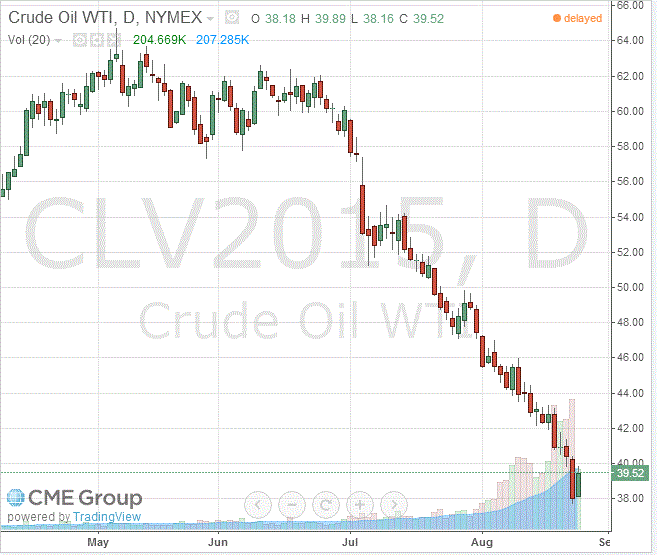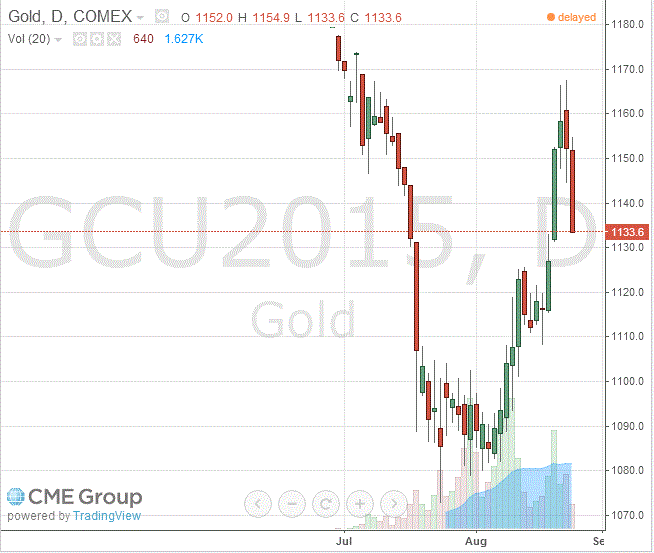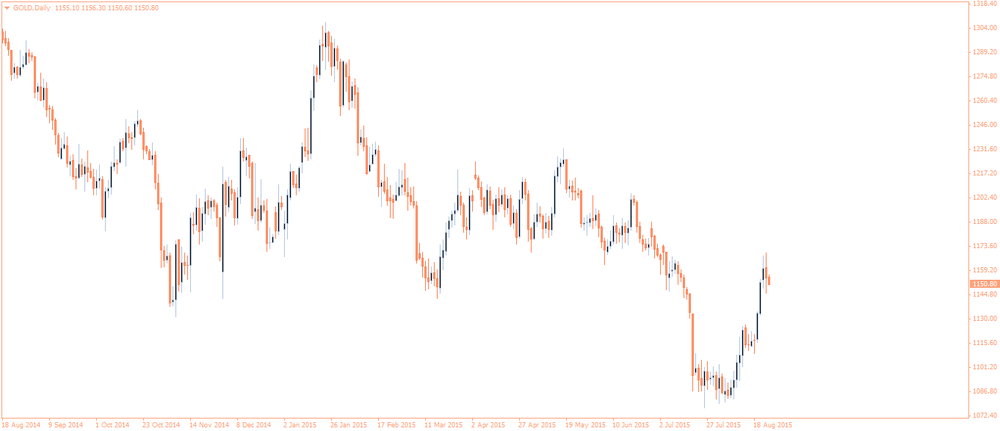Noticias del mercado
-
17:43
Oil prices rise more than 2%
Oil prices rose more than 2% today but remained near 6-1/2-year lows as concerns over the global oil oversupply and worries over a slowdown in the Chinese economy continued to weigh. The People's Bank of China (PBoC) announced on Tuesday that it lowered the one-year benchmark bank lending rate by 25 basis points to 4.6%. The central bank hopes with this decision to support the country's economy and to calm down the markets.
The interest rate cut would be effective from Wednesday.
One-year benchmark deposit rates were cut by 25 basis point, reserve requirements (RRR) were lowered by 50 basis points to 18% for most big banks.
New reserve requirements would be effective on September 6.
Comments by Iran's oil minister Bijan Zanganeh. He said that Iran plans to raise output by 500,000 barrels a day as soon as restrictions are lifted, and a further barrels a day in the coming months after the lift-off.
Zanganeh also said that the country wants to sell its oil whether the price declines or rises.
"We should sell our oil whether the price falls or goes to $100 (a barrel). Even though we would like to sell our oil more expensively, the price is determined by the market," he noted
Market participants are awaiting the release of U.S. crude oil inventories data. The American Petroleum Institute (API) is scheduled to release its U.S. oil inventories data later in the day, and U.S. oil inventories data from the U.S. Energy Information Administration is expected on Wednesday.
WTI crude oil for October delivery rose to $39.52 a barrel on the New York Mercantile Exchange.
Brent crude oil for October increased to $43.35 a barrel on ICE Futures Europe.

-
17:24
Gold price declines on a decision by China’s central bank and on a stronger U.S. dollar
Gold price declined on a decision by China's central bank and on a stronger U.S. dollar. The People's Bank of China (PBoC) announced on Tuesday that it lowered the one-year benchmark bank lending rate by 25 basis points to 4.6%. The central bank hopes with this decision to support the country's economy and to calm down the markets.
The interest rate cut would be effective from Wednesday.
One-year benchmark deposit rates were cut by 25 basis point, reserve requirements (RRR) were lowered by 50 basis points to 18% for most big banks.
New reserve requirements would be effective on September 6.
The greenback rose against other currencies after the release of the better-than-expected U.S. consumer confidence index. The index rose to 101.5 in August from 91.0 in July, exceeding expectations for a rise to 93.4. July's figure was revised up from 90.9.
The increase was mainly driven by the better outlook for current conditions. The present conditions index climbed to 115.1 in August from 104.0 in July. It was the highest level since November 2007.
Gains were limited as it is unclear if the Fed will start raising its interest rate in September.
September futures for gold on the COMEX today decreased to 1133.60 dollars per ounce.

-
14:41
The People's Bank of China (PBoC) lowers its interest rates
The People's Bank of China (PBoC) announced on Tuesday that it lowered the one-year benchmark bank lending rate by 25 basis points to 4.6%. The central bank hopes with this decision to support the country's economy and to calm down the markets.
The interest rate cut would be effective from Wednesday.
One-year benchmark deposit rates were cut by 25 basis point, reserve requirements (RRR) were lowered by 50 basis points to 18% for most big banks.
New reserve requirements would be effective on September 6.
-
10:18
The People’s Bank of China injects 150 billion yuan in the financial system
The People's Bank of China (PBoC) injected 150 billion yuan ($23.4 billion) in the financial system on Tuesday, increasing efforts to combat capital flight from the country's economy and stock markets. The central bank used seven-day reverse-repurchase agreements.
The PBoC already injected 150 billion yuan in the financial system last week.
-
08:47
Oil prices climbed
West Texas Intermediate futures for October delivery advanced to $38.81 (+1.49%), while Brent crude rebounded to $43.00 (+0.73%) after sharp losses amid ongoing collapse in China's equity markets in the previous session. Nevertheless continued declines in Chinese stocks kept investors concerned and both crudes stayed close to Monday's lows of $37.75 and $42.23, respectively, weakest since early 2009.
Meanwhile oversupply and robust production persisted. At the same time weak economic data from China (one of the key consumers of oil) and signs of capital outflows may harm demand.
-
08:27
Gold declined slightly
Gold is currently below a seven-week high at $1,151.40 (-0.19%). It posted a decline on Monday after five sessions of gains, which were generated by a collapse in equity markets worldwide and concerns over China's economy. However today some Asian stock indices rebounded, although U.S. indices dropped sharply.
"Gold should continue to hold its value during the current market turbulence, however a material surge higher is unlikely as participants find liquidity by selling all asset classes, including precious metals," MKS Group trader James Gardiner said. However expectations of a rate hike in the U.S. still weigh on bullion. Atlanta Fed President Dennis Lockhart said Monday that he still believes that the central bank will raise its benchmark rate this year.
-
00:34
Commodities. Daily history for Aug 24’2015:
(raw materials / closing price /% change)
Oil 38.06 -0.47%
Gold 1,154.40 +0.07%
-
